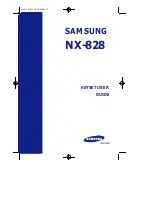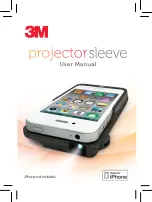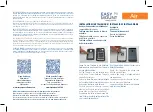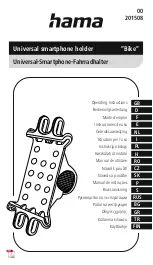
LCD Arm Mount Installation
¤
2005-2010 SR Research Ltd.
29
5.3
Assembling the LCD Arm Components
Once the Arm Base has been secured to a sturdy tabletop, it is time to insert the LCD Arm into
the Arm Base. At this point you may wish to add one or both of the Arm Extenders that were
included with the system (2.5” and 6” extenders – 6 cm and 15 cm) as these raise the overall
height of the LCD Arm Mount. Note that using an extender will also raise the lowest point that
the LCD Arm Mount’s monitor can reach as they simply displace the entire unit vertically. The
extender shaft simply fits into the silver cup of the Arm Base or into the cup of another
extender.
Pick up the LCD Arm with one hand on each of the components to minimize its components
from swinging. The round silver shaft at the bottom of the arm fits into the silver cup at the top
of the Arm Base (or one of the optional extenders already inserted into the Arm Base) – simply
lower the LCD Arm straight into the cup, with cabling off to the side of the base that is closest
to the Display or Host PC to which the cabling will eventually be attached. Several pieces of
double-side Velcro ship with the LCD Arm Mount in order to assist users who may wish to
wrap the Velcro around the arm components to secure it before lifting. This can prevent the
arm from swinging while it is being moved.
The EyeLink 1000 LCD Arm Mount’s Camera and LCD Assembly holds an LCD computer
monitor, the EyeLink 1000 high-speed camera in the level position, and an infrared illuminator
light source. These are affixed as a single unit that can be easily lifted using handles that are
attached to each side of the LCD monitor. Facing the back of the monitor, grip the handles and
guide the shaft of the tilter mechanism into the hole at the top end of the arm. Gently wiggle
the assembly until the shaft is fully inserted into the arm.
Some configurations of the LCD Arm may require weights at the end of
the table opposite the Arm Base, to offset the weight of the LCD Arm
apparatus.
The LCD Arm is fairly heavy, with the entire apparatus weighing in at approximately 11 kg (or
25 lbs). Some possible configurations of the LCD Arm extend the monitor over empty space
away from the table’s edge, placing the weight of the Camera and Monitor Assembly away from
the support of the table. To prevent tipping, the table needs to be large, heavy and sturdy, or
weighted at the end opposite from which the LCD Arm will extend. Caution should be used
when first testing the range of the LCD Arm in case the table is not strong enough to properly
distribute the weight of the apparatus. If the table begins to tip while extending the LCD Arm
out into space away from the table, place the Arm apparatus back above the table surface and
add weight (e.g., the Display computer?) to the table surface opposite where the Arm is
extending. Repeat this procedure until it is clear that the apparatus is stable.
















































